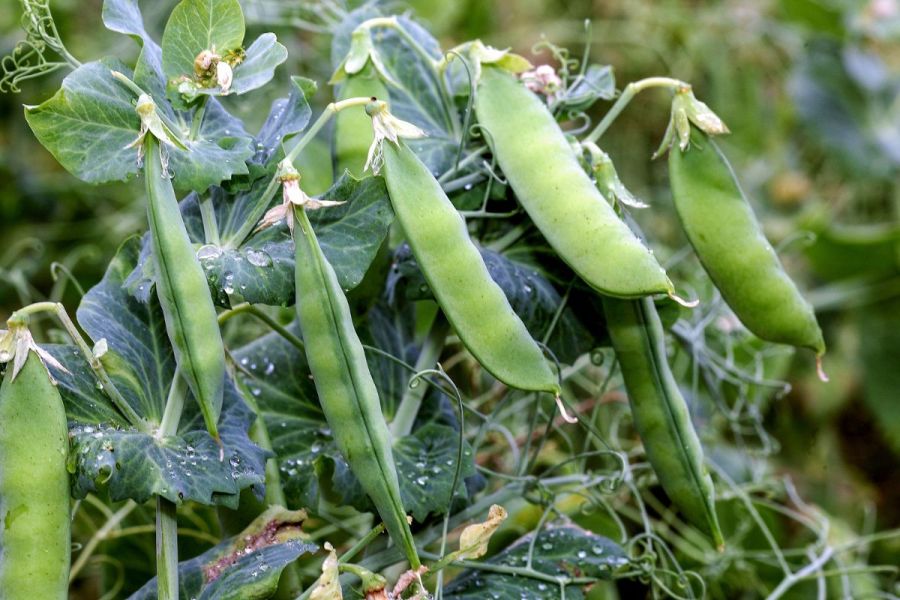With growing interest in pulse crops, breeders have been working hard to bring forward varieties with better agronomic traits. CPM looks at the additions to PGRO’s Descriptive List, which was unveiled last month.
“The list now includes a score for downy mildew and rust on winter beans.”
By Lucy de la Pasture and Rob Jones
The Processors and Growers Research Organisation (PGRO) unveiled its 2023 Descriptive List (DL) for pulses at the CropTec Show in Peterborough last month, with seven varieties making their debut.
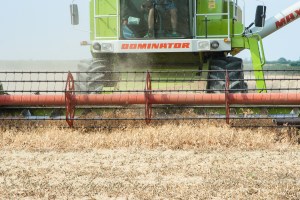
The combining peas category has seen the most new variety additions in 2023, with two yellow peas, three green peas and one new variety of marrowfat pea added.
Combining peas feature the most prominently, taking up six spots on the DL, with the remaining position being filled by a solo winter bean variety. Those numbers could swell further, with a strong possibility that up to four spring bean varieties could be added when they have obtained National List status.
Even without reaching this ‘full house’ of new additions, the number of varieties making their debut is more than double the debutants on the 2022 list, according to Chris Judge, senior technical officer at PGRO.
“2022 has been a year with a lot of changes. Not only have the trials run successfully, but the data produced by the DL is reassuringly consistent.
“High-yielding varieties have maintained their good performance and other traits, such as disease ratings, also retain similar scores to before with the addition of new supporting data. For example, the list now includes a score for downy mildew and rust on winter beans. Hopefully the new varieties added to the list will also prove stable and reliable in the years to come.”
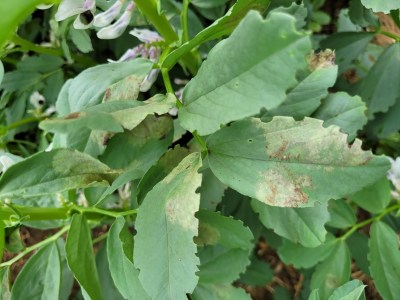
Downy mildew resistance is something pulse breeders have been improving and a resistance rating for the disease has been added to the DL for beans in 2023.
The 2022 season wasn’t the easiest on spring crops, with prolonged drought conditions and record temperatures reached during the growing season. Despite this, the PGRO trials were successful and the varieties grown across the country demonstrated impressive consistency in terms of yield and disease resistance, he says.
“Dry conditions in April impacted initial growth of spring-sown crops, but rainfall in April wasn’t as low as in 2020 and 2021. The summer heatwaves led to early harvesting of most crops, with the first pea trial – in Essex – being harvested on 18 July, which is 17 days earlier than in 2021.
“On average, spring bean trials were harvested 23 days earlier than in 2021. But the high temperatures and dry conditions did help to reduce levels of powdery mildew.”
With pulses still taking a back seat in many trial programmes, the PGRO’s DL provides growers with a valuable opportunity to compare different varieties and consider which will best suit their soil type and rotation. Chris points out that promising new varieties are regularly submitted by plant breeders, with those that suit the market and have traits of interest most likely to be supported and available for purchase in the future.
Kicking off the combining pea additions are two yellow peas – Glam (bred by Senova) and LG Ajax (Limagrain). Three new green pea varieties have also been added, namely Butterfly (LSPB), KWS Gotham (KWS), and Kiravi (Senova).
While Kameleon (114%) and Orchestra (111%) remain the top-yielding yellow peas, new addition Glam is snapping at their heels with a yield of 108%. Glam combines decent yields with a straw length of 88cm and a standing ability of 7, along with resistance to pea wilt and a 5 rating for downy mildew.
Glam has a seed weight of 248g, with a protein content of 21.8% and it’s also later to mature than other yellow peas, with just a 3 for earliness of maturity. Where downy mildew is a key consideration, Rivoli has the best downy mildew score (8) of all the yellow peas on the list.
LG Ajax maintains the upward trend in yield in this section, with 103% of the control varieties. It’s supported by good resistance to powdery mildew.
Green pea Carrington remains the top yielder at 115% of control varieties. Closing the gap is Butterfly, which also performed well with a yield of 109% and has an earlier maturity and larger seed size than Carrington.
KWS Gotham and Kiravi are both later maturing varieties with competitive yields, 107% and 105% respectively. Within the green category, LG Aviator and Greenwood have resistance to powdery mildew, which is becoming an increasingly important trait.
Downy mildew resistance is another trait that growers may value highly and, of the green peas, Carrington, Bluetime and LG Aviator have the highest downy mildew rating (8).
Mantara and Rose remain the only two maple peas on the DL, with both having good resistance to downy mildew.
A new variety of Marrowfat has made the list, Takayama (LSPB), and has become the highest yielder in that category – achieving a 96% yield and equalling Akooma, which was first added in 2021. Both of these varieties have a yield which is 10% above that of old stalwart Sakura, though it has a smaller seed size with a thousand seed weight of 350g. Octavia also remains on the list.
Takayama also is the standout variety when it comes to downy mildew resistance, scoring a 6 – which is considerably better than the other marrowfats on the DL, which are rated from 2-4.
Most winter bean trials established well with better conditions for winter drilling than the past few years. Bonneville is the only new winter bean addition to the 2023 list and has a pale hilum. Its yield is above average at 102%, and it has the second highest protein content on the list.
With a seed size of 692g, protein content of 26.5% and standing ability of 8, Bonneville has a good agronomic profile, points out Tom Yewbrey of Senova. “Bonneville is a great package. It’s similar to Vespa in terms of straw length at 115cm but has a slightly higher protein content and larger seed size.”
From the same stable, Vespa remains at the top of latest DL for the third successive year, with a yield of 111, with Vincent just behind on 108.
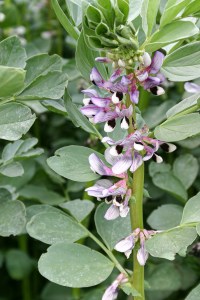
Last season’s winter bean trials established well with better conditions for winter drilling than the past few years.
Ratings for downy mildew in winter beans have been added to the DL. Most varieties have scored a 5 for downy mildew, with Vincent (7) and Norton (6) achieving the highest of the ratings. Rust resistance ratings have also been added to the DL for winter beans.
Mirroring grower experience across the country, spring bean trials suffered in the prolonged hot and dry period in the summer, producing lower yields than 2021. Four new high-yielding spring bean varieties performed well, which are Genius, Futura (both LSPB), LG Stego (Limagrain) and Focus (Saaten Union), but at the time of writing none of these have received UK National List status so can’t be added to the DL at the time of publication.
Old-timer Lynx has proven to be a consistent performer since it was first added to the DL in 2016 and remains the top yielding variety (107%). It also has one of the highest downy mildew ratings at 7, though is susceptible to rust (4).
For growers looking for an early maturing variety with good downy mildew resistance, Yukon may tick the box. Despite having a low yield (92%), it has the best downy mildew rating (9) and is the earliest maturing variety on the list.
Maris Bead, the only bean on the list with a black hilum, has the same downy mildew rating as Lynx (7).
Harvest date and yield forecasting tool for vining peas
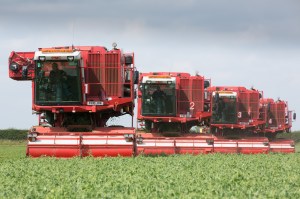
PGRO is developing a new forecasting system for harvest dates and yields, utilising machine learning to help keep pea viners on track.
The PGRO has undertaken exciting advances in the development of a forecasting system for harvest dates and yields in vining peas. Work has continued in model development and refinement, and the first tests on online forecasting tool will take place in 2023.
The work is being led by Leah Howells, data scientist at PGRO. “The UK’s climate is undeniably changing, with the Met Office indicating that the ten hottest years since records began have occurred since 2004. This year, the worst of July’s record-breaking heatwave was concentrated around the South and East of the UK, which is particularly troubling for the vining pea growing area which corresponds directly to this eastern seaboard hotspot.”
Purely temperature-based prediction methods, such as accumulated heat units, are no longer accurate enough to reliably predict harvest dates year-on-year, she says. Additionally, increasingly frequent extreme weather events are wreaking havoc on processors and growers’ ability to make advanced estimates of factory throughput.
PGRO would like to make it possible to predict maturity and yield in advance through the use of remotely-sensed earth observation data, explains Leah. By combining this data with a large body of historic commercial crop data, machine learning models can be used to predict future harvests.
“Also under consideration is the current need to collect tenderometer samples for individual crops multiple times in the approach to harvest. Every sample taken well before the crop is ready is ultimately an unnecessary trip.
“By narrowing the window of certainty around harvest and therefore knowing in advance an earliest estimated sampling date, processors may see the possibility of more than halving the number of samples that need to be collected per field.”
The project secured further Innovate UK Smart Grant funding in July, enabling it to continue through to completion in February 2024, when the tool will be launched.
The tool requires a small number of inputs which are already collected by growers. These are unique crop identification numbers or codes, drill dates, full-flowering dates, varieties and maturity indices, and target tenderometer readings. The tool also needs a field location.
Analysis of over 17,000 historic crops has determined that regardless of variety or location, by far the most important factor when predicting harvest date in vining peas is the date of full-flower.
All other information, including climatic data, spatial and topographical data relating to field locations, and earth observation data is collected and handled by the forecasting system itself. This results in a simple to use, largely automated system that can be run as often as required throughout the season for continuous crop monitoring.
Ongoing automated weather data and satellite-derived canopy reflectance data means users are provided with timely, up-to-date and dynamic forecasts.
Vining pea growers will be able to test a beta version of the tool next year, adds Leah. Processors will also be encouraged to run the models alongside current prediction or management methods and compare results
“We aim for the trial version of the platform to be made available through the PGRO website in early spring next year. Following feedback received during the 2023 testing period, we plan for an official launch at the end of February 2024, ready to be used during the 2024 vining season and beyond.”
The PGRO said it hopes that this tool is able to become an integrated management solution for the UK vining pea industry and continue to improve planning and management for years to come.
Lincolnshire grower returns to spring peas
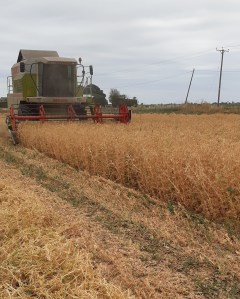
After its first full commercial year Greenway appears to have shown promise based on grower feedback, according to Agrii.
There’s a renewed interest in growing pulses as marketing opportunities begin to make them a more attractive proposition. After several years away from spring peas, Andy Pearce of South Lincolnshire-based WA Pearce and Sons, returned to the crop in 2022 – drilling 20ha of the green pea variety Greenway in late March across two sites made up of silt and black land soils.
“There was a combination of factors behind bringing spring peas back into our rotation this year. They are still the best entry for a following wheat, we needed to bring our 2022 harvest date forward having grown a lot of spring wheat the previous year and, from a business perspective, both prices and domestic demand for peas have risen since we last grew the crop.”
Following an application of starter fertiliser at 100kg/ha, the crop established well on the back of some decent early April rain and staying ahead of the farm’s normal weed burden of thistles, speedwell, cleavers and mayweed. All went very smoothly up to mid-May, from which time there was no significant rain until the crop’s eventual harvest in late July.
“Having been caught out before with long dry spells, we were proactive this time, adding two applications of manganese and a foliar feed to our aphicide and pea moth sprays in May and June, along with an application of Signum (boscalid+ pyraclostrobin) at 0.44 l/ha on 17 June 17, which helped the crop stay green and cope better with the drought conditions. The strategy worked well and by June we had a healthy, still green crop that was standing waist high.”
Harvest took place between the 21-25 July, with the overall yield a respectable 2.75t/ha, says Andy. “Admittedly, it wasn’t quite what we were originally looking for, but a very good result given the unprecedented dry spell. I have no doubt that with more moisture it would have been a 5t/ha crop given it grew well and produced a lot of pods.”
It was Greenway’s agronomic traits that attracted Andy to the variety. “It’s a tall variety with good canopy cover, produces an excellent straw length and we didn’t need to go overboard on herbicides to keep it clean during the spring. There were no issues with pod set, and it suited both our soil types and the change up in our rotation.”
Echoing Andy’s assessment, Agrii seed manager Rebecca Gibson highlights several marketing pluses offered by the variety.
“This is Agrii’s first full commercial year with Greenway and, on the whole, its shown promise based on customer feedback. With uniform seed size and good colour retention, it has the key attributes that the end markets are looking at, both for human consumption and micronising.
“For the grower, it’s high yielding – having achieved 109% of control in 2021 trials – and has very good standing ability, so it’s easy to harvest. It’s also agronomically strong with good downy mildew resistance,” she comments.
This article was taken from the latest issue of CPM. For more articles like this, subscribe here.

